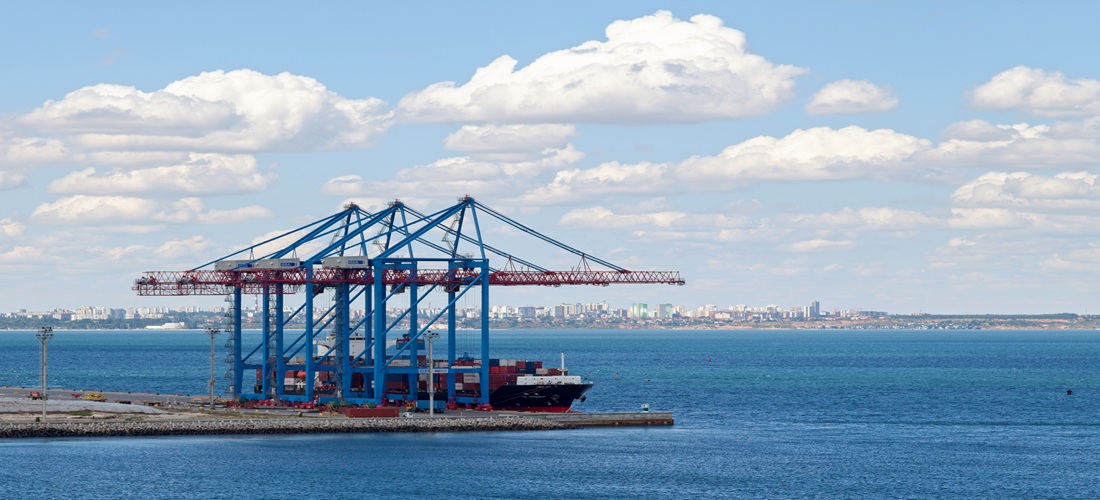
Port of Santos Won’t Be Affected by New Maritime Route Between China and Peru, Experts Say
Dec, 18, 2024 Posted by Denise VileraWeek 202448
The recent inauguration of the Port of Chancay in Peru, which established a direct maritime route between China and Latin America, is not expected to impact the Port of Santos. Despite being a strategic development for regional logistics, experts affirm that the Peruvian complex, operated by the Chinese state-owned company Cosco Shipping, does not compete directly with Brazil’s main terminal.
The Port of Chancay, inaugurated in November, is initially designed to handle 1 million TEUs (twenty-foot equivalent units) annually. Its location on the Pacific Ocean will reduce maritime transit times between China and Peru from 40 to 28 days. The new terminal will strengthen China’s ability to import strategic resources from South America, such as minerals (lithium and copper) and agricultural products, including soybeans.
The chart below compares container exports and imports at the Port of Santos between January 2021 and October 2024. The data is derived from DataLiner, a Datamar-powered intelligence product.
Santos Port | Exports & Imports| Jan 2021 – Oct 2024 | TEUs
Source: DataLiner (click here to request a demo)
Impact on Santos: Experts Reassure the Sector
According to port consultant Luis Claudio Montenegro, the Port of Santos faces more pressing concerns, such as expanding its infrastructure, reducing bureaucracy, and increasing legal security. “New alternatives, even those in other countries, enhance our productive potential, consumption, and infrastructure growth,” he stated.
Montenegro believes that if Santos addresses its known structural bottlenecks, the port could reach a cargo volume of 1 billion tons by 2060, consolidating its competitive position.
Former National Secretary of Ports Fabrizio Pierdomenico agrees that Chancay does not compete with Santos, particularly regarding exporting agricultural commodities such as soybeans, corn, and soybean meal. He explains that Brazil’s grain exports rely on efficient, cost-effective logistics that combine rail and road transport.
“It is economically unfeasible to transport grains by truck from Mato Grosso to Peru, crossing the Andes Mountains. The logistical costs would outweigh any potential benefits,” Pierdomenico analyzed. “There is no possibility of diverting cargo from the Port of Santos, and I believe this applies to all of Brazil.”
Chancay: A Robust but Regional Infrastructure
The Port of Chancay was built in a small namesake city located 78 km from Lima, with estimated investments of $3.4 billion (around R$20.7 billion)—the complex features cutting-edge infrastructure, including 15 berths and a 2 km tunnel for cargo transport. The navigation channel has been dredged to a depth of 17 meters, allowing it to receive post-Panamax ships with capacities of up to 18,000 TEUs.
Cosco Shipping aims to increase the port’s annual throughput to 1.5 million TEUs in the coming years, making Chancay the largest commercial port in South America.
Despite the potential of the Peruvian port, experts emphasize that its focus is on serving regional demands and strengthening bilateral trade with China without challenging the prominence of the Port of Santos in Brazil.
Source: A Tribuna
-
Shipping
Jun, 09, 2023
0
International trade in Argentina face strong headwinds
-
Ports and Terminals
May, 31, 2024
0
Espírito Santo Dockworker Suffers Fatal Accident While Loading Granite
-
Mar, 16, 2023
0
Innovations and oil industry growth expected ahead for Brazilian maritime market
-
Shipping
May, 18, 2021
0
Why stratospheric container rates could rocket even higher


